|
The Old Barn
The old barn served
us well for over twenty years as we built our herd. The two-story
hayloft held over 20,000 bales; the lower section housed up
to a hundred cows and calves through the winter, both inside
and in the outer yards. It was certainly over 200 years old,
and before we bought the farm, it was used as a dairy barn
which we converted to handle beef cattle.
|
|
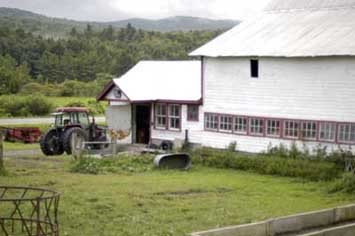
|
| July
31st, 2007 ~ 2:56 a.m.
About 2:45 a.m., we were aroused by
our dogs' frantic barking - the barn, which had been quiet around
2:00, was now engulfed in a roaring and highly suspicious fire.
The Norwich Volunteer Fire Department arrived within a half
hour and worked tirelessly through the night and following day.

|
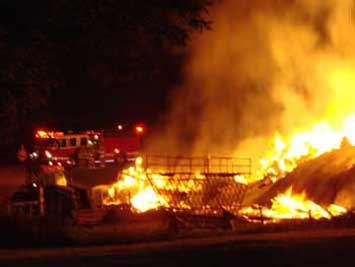
The Norwich squad was assisted by
volunteer and professional fire fighters and FAST squad members
from Fairlee, Hanover, Hartford, Lyme, Sharon, Strafford, and
Thetford; Lebanon fire fighters covered the Norwich station
in case there was another emergency. There was even an auxilliary
group that brought food and liquids throughout the ordeal.
|
| FAMILY,
NEIGHBORS & FRIENDS |
Before the day was out,
we were overwhelmed by the generosity and outpouring of support
from so many people. Neighbors set up a bank account for donations;
family members and friends helped with the cleanup; food was provided
for all, and we began to plan for the future. Vermont extension
agent and friend, Sam Comstock, linked us with a UNH barn designer,
John Porter, to help us map out an efficient and simple barn plan. |
| Excavators
Graham Webster and Eamonn Donovan, with Scooter Hardy trucking
for us, masterminded the heavy clean-up.
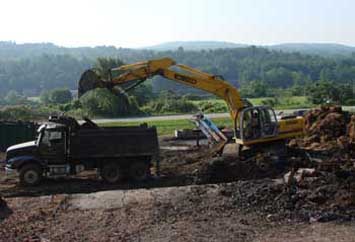
|
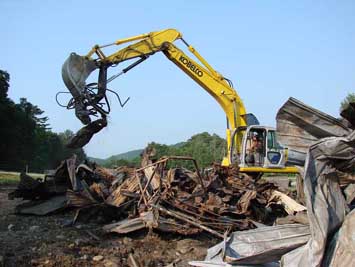
|
| Pat
Tullar from Orford, friend and fellow beef producer and barn
builder, offered to coordinate the building project and became
our contractor.
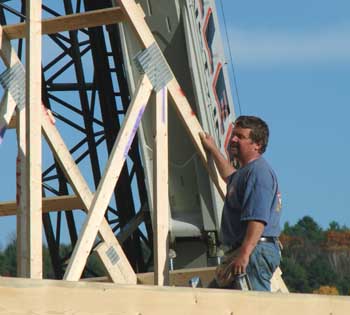
|
The barn was
ready for the cows on Christmas day of 2007, thanks to tireless
work during the week from Pat and his crew and steady volunteer
support from family members and friends over the weekends.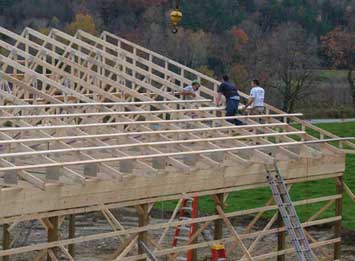 |
| Jody
took a personal day from school to help Pat finish the purlins
when his crew went hunting.

|
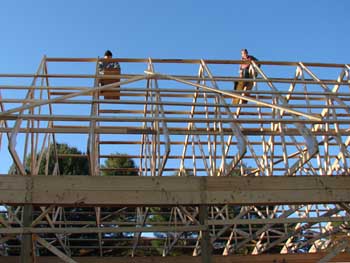
|
Our son Joshua
rallied so many friends to help us out. Here, he is surveying
the pattern of radiant tubing for the shop and pens for winter
calving.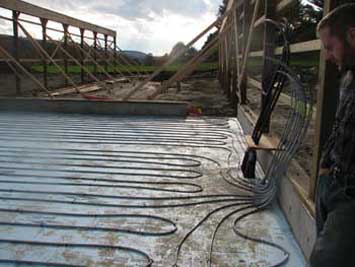 |
One long weekend was
spent putting up the back wall with boards donated by David
Ferm's barn dismantling company.
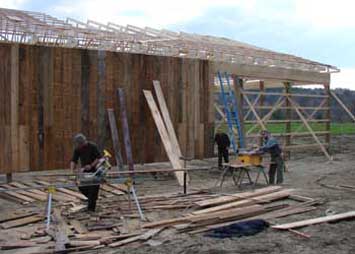
|
|

We framed in the pens and prepared
for the north end insulation and siding. |
This would
become the sheltered, bedpack area for the cows when they're not
feeding. There is an alley at the back of the pens with a door
in each. This makes it easy to move animals into the calving pens
at the end.
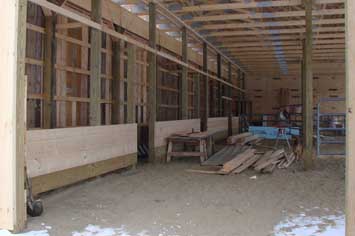 |
The cement pad in front of the covered
area is ready for the gates and feed line in the front. To
the right are the shop and calving area.

|
Further weekends
of volunteer help led to completion of the roof as well as the
north end and the closed-in shop and pens.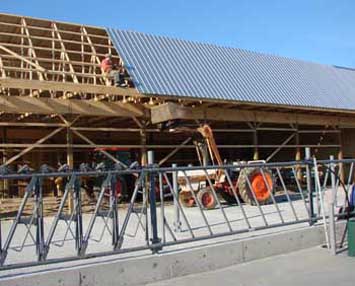 |
|
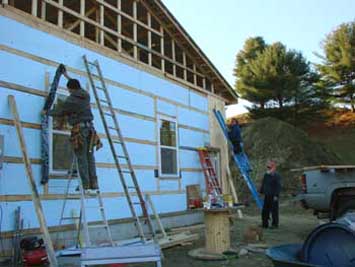
|
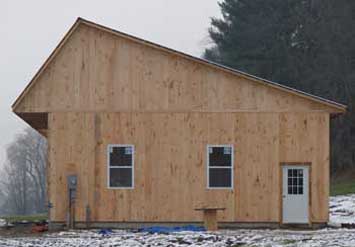
|